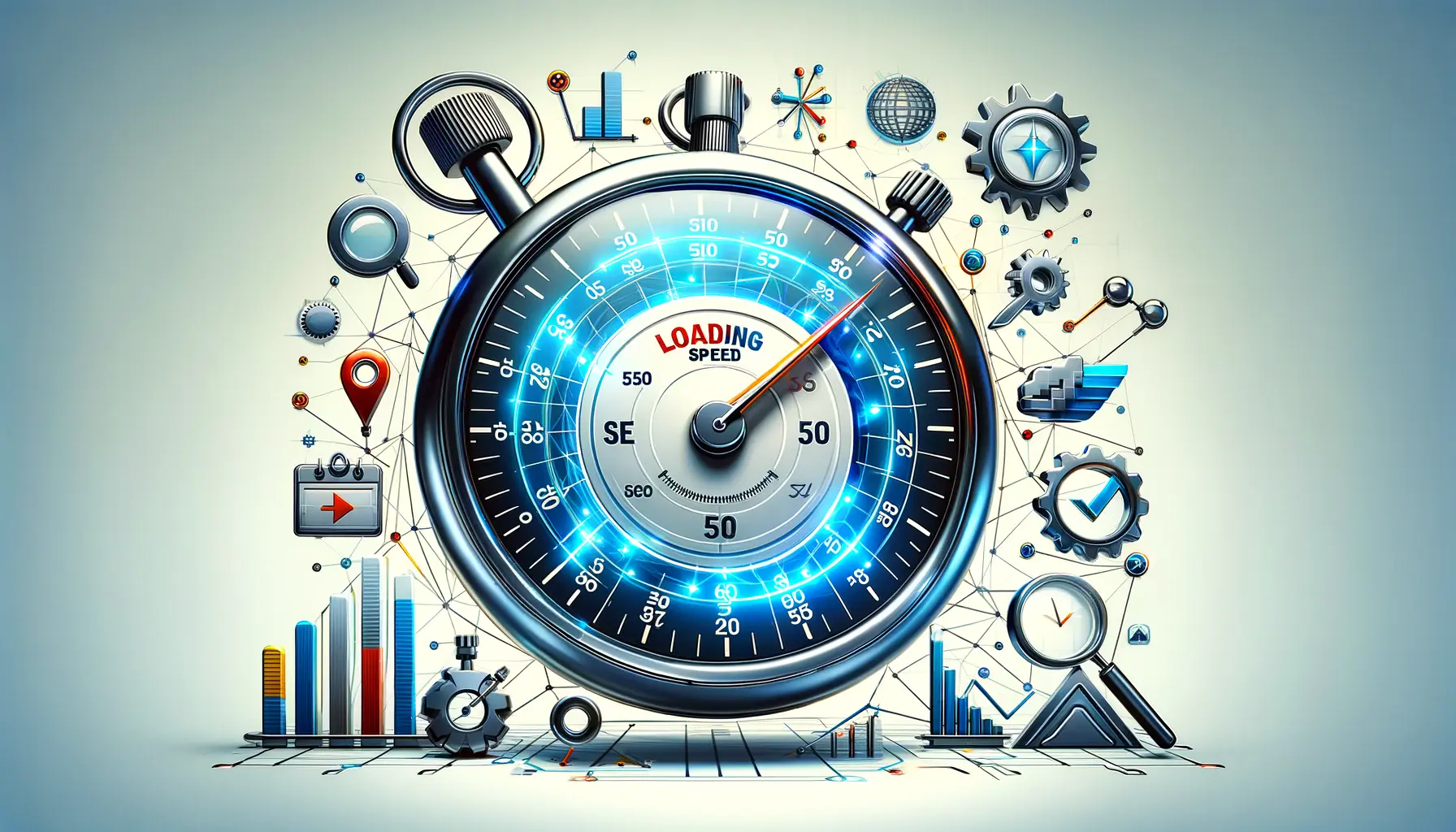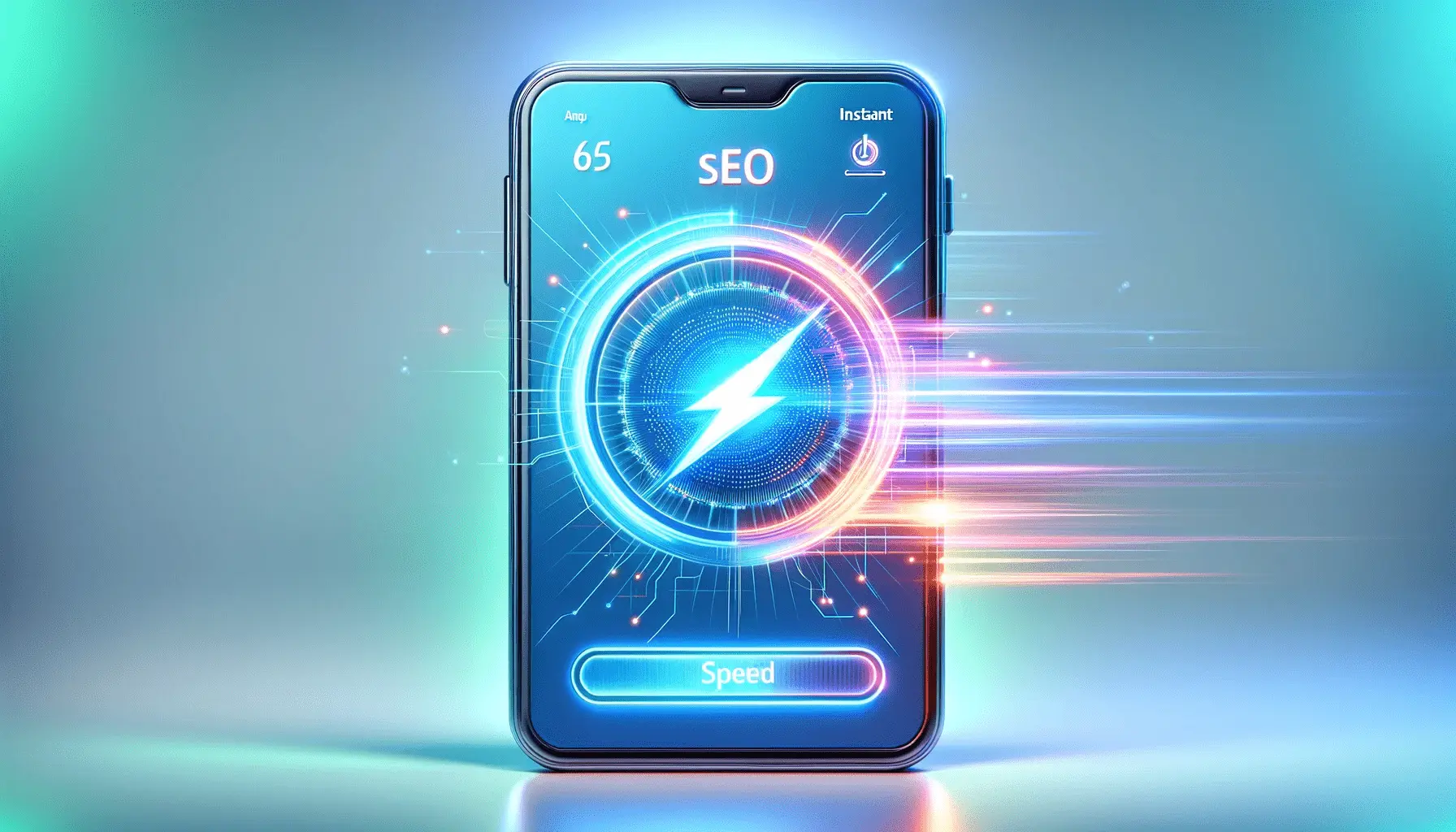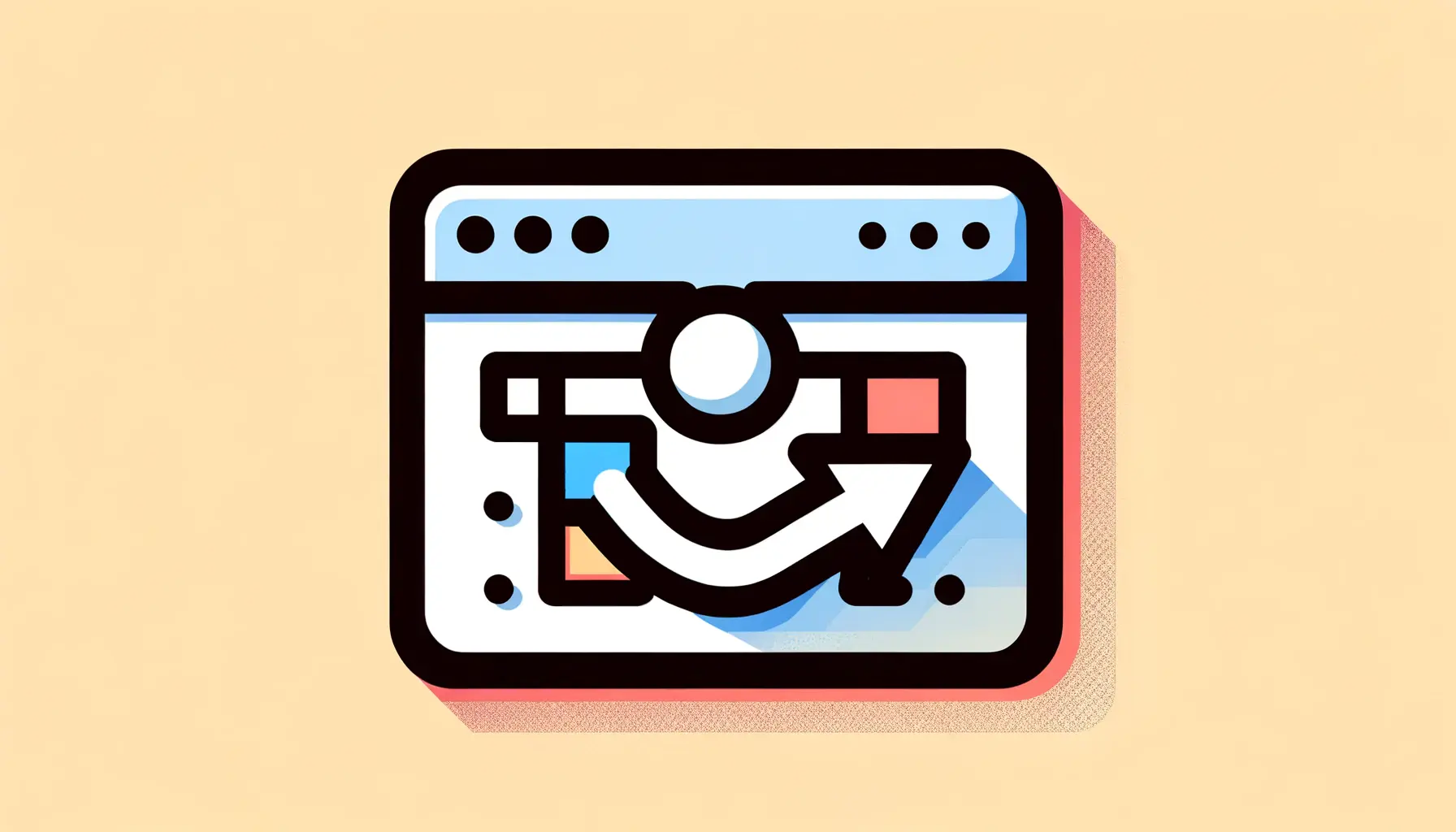The digital landscape is evolving rapidly, with loading speed emerging as a pivotal factor in on-page SEO performance.
In an era where user experience is paramount, the speed at which a page loads can significantly influence a website’s search engine ranking and user engagement.
This article delves into the intricate relationship between loading speed and on-page SEO, shedding light on why and how businesses should prioritize optimizing their websites for speed.
Understanding the mechanics behind loading speed and its impact on SEO is crucial for webmasters and marketers alike.
As search engines, particularly Google, continue to refine their algorithms, the emphasis on user experience factors, including page speed, has become more pronounced.
This shift underscores the need for websites to not only provide valuable content but also ensure that it is accessible swiftly and efficiently to users across different devices and networks.
- Loading Speed in SEO
- Best Practices for Improving Loading Speed
- Core Web Vitals and Their Impact on SEO
- Mobile Optimization and Loading Speed
- Content Optimization for Loading Speed
- Advanced Techniques for Speed Optimization
- Monitoring and Maintaining Website Speed
- Conclusion: The Integral Role of Loading Speed in On-Page SEO Success
- Loading Speed and SEO: Frequently Asked Questions
Loading Speed in SEO
Loading speed refers to the time it takes for a webpage to fully display its content to a user after they have clicked on a link or entered a URL.
This metric is a critical component of on-page SEO, as it directly affects a site’s usability, bounce rates, and ultimately, its ranking in search engine results pages (SERPs).
A faster loading speed enhances user experience, encouraging visitors to stay longer and engage more deeply with the content.
From an SEO perspective, search engines aim to provide users with the best possible results for their queries.
This objective extends beyond the relevance and quality of content to include the overall user experience, of which loading speed is a key element.
Websites that load quickly are perceived as more user-friendly, leading to higher rankings in SERPs.
This relationship between loading speed and SEO performance is supported by numerous studies, indicating that even a one-second delay in page load time can result in significant decreases in page views, customer satisfaction, and conversions.
Factors Affecting Loading Speed
Several technical elements contribute to a webpage’s loading speed, including server response time, file sizes, and the efficiency of the code.
Optimizing these factors can lead to substantial improvements in loading times.
For instance, reducing the size of images and minifying CSS and JavaScript files can decrease the amount of data that needs to be transferred, thereby speeding up the loading process.
Moreover, the implementation of modern web technologies such as lazy loading, which delays the loading of non-critical resources at page load time, can also enhance page speed.
Employing content delivery networks (CDNs) to distribute the load and reduce the distance between the server and the user is another effective strategy for improving loading speed.
Optimizing loading speed is not just about improving website performance; it’s a strategic SEO practice that can lead to better user engagement, higher rankings, and increased conversions.
Best Practices for Improving Loading Speed
To enhance your website’s loading speed and, by extension, its on-page SEO performance, it’s essential to adopt a series of best practices.
These strategies are designed to optimize the technical aspects of your site, ensuring that it loads quickly and efficiently for all users.
Implementing these practices can lead to significant improvements in user experience, search engine rankings, and website conversions.
Improving loading speed requires a multifaceted approach, focusing on both front-end and back-end optimizations.
Here are some of the most effective strategies:
Optimize Images
Images often account for the bulk of a webpage’s size, significantly affecting its loading speed.
Optimizing images by compressing them and adjusting their format can drastically reduce their size without compromising quality.
This step is crucial for speeding up page load times.
- Use tools like Adobe Photoshop or free online services to compress images before uploading them to your website.
- Adopt modern image formats such as WebP, which offers superior compression and quality characteristics compared to traditional formats like JPEG and PNG.
Minify CSS, JavaScript, and HTML
Minification is the process of removing unnecessary characters from code without changing its functionality.
This includes white space, newline characters, comments, and block delimiters, which can increase file size and slow down page loading.
- Utilize tools and plugins that automatically minify CSS, JavaScript, and HTML files. This can significantly reduce the size of these files, improving loading speed.
- Consider using a content management system (CMS) that includes minification capabilities or installing third-party plugins that perform this function.
Enable Browser Caching
Browser caching stores webpage resource files on a local computer when a user visits a webpage.
This means that when the user returns to the site, the browser can load the page without having to send another HTTP request to the server.
- Set appropriate cache-control headers for your web resources to leverage browser caching effectively.
- Specify an expiration date or a maximum age in the HTTP headers for static resources to inform the browser how long to cache the resources.
Use a Content Delivery Network (CDN)
A CDN is a network of servers located around the world that deliver web content based on the user’s geographic location.
By hosting your website’s resources on a CDN, you can significantly reduce the time it takes for your pages to load by serving content from a server closest to the user.
- Select a CDN provider that offers a wide network of servers and integrates easily with your existing website infrastructure.
- Ensure that static resources like images, CSS, and JavaScript files are served through the CDN to optimize delivery speeds.
Implementing these best practices requires a combination of technical skills and strategic planning. Regularly monitoring your website’s loading speed and making ongoing optimizations is key to maintaining optimal performance.
Core Web Vitals and Their Impact on SEO
Google’s introduction of Core Web Vitals has marked a significant shift in how website performance is measured and optimized for search engine rankings.
These metrics provide a unified set of signals critical for evaluating user experience on the web, focusing on loading performance, interactivity, and visual stability of pages.
Understanding and optimizing these vitals can greatly enhance your site’s user experience and SEO performance.
Core Web Vitals consist of three main metrics: Largest Contentful Paint (LCP), First Input Delay (FID), and Cumulative Layout Shift (CLS).
Each metric measures a different aspect of the user experience and is a crucial part of Google’s Page Experience signals used in ranking websites.
Largest Contentful Paint (LCP)
LCP measures the loading performance of a page, specifically the time it takes for the main content of a page to load.
A good LCP score ensures that the page is useful to the user without unnecessary delay.
- Optimization Tips: Improve server response times, remove render-blocking JavaScript and CSS, and optimize resource loading strategies.
- Target: Aim for an LCP of 2.5 seconds or faster to provide a good user experience.
First Input Delay (FID)
FID measures the interactivity and responsiveness of a page, quantifying the user’s first impression of a site’s usability.
It tracks the time from when a user first interacts with a page to the time when the browser is able to respond to that interaction.
- Optimization Tips: Minimize (or defer) JavaScript, use a web worker, and remove any non-critical third-party scripts.
- Target: Aim for an FID of 100 milliseconds or less to ensure interactions feel fluid to users.
Cumulative Layout Shift (CLS)
CLS measures the visual stability of a page, focusing on how often users experience unexpected layout shifts.
A low CLS ensures that the page is visually stable as it loads, improving user experience.
- Optimization Tips: Include size attributes for images and video elements, ensure ad elements have a reserved space, and avoid inserting new content above existing content unless in response to a user interaction.
- Target: Aim for a CLS of 0.1 or less to prevent frustrating layout shifts for users.
Optimizing for Core Web Vitals is not just about improving metrics; it’s about enhancing the real-world experience for your site’s visitors. By focusing on these aspects, you can create a faster, more responsive, and stable website that ranks better in search engine results and provides a superior user experience.
Mobile Optimization and Loading Speed
In today’s digital age, mobile optimization is no longer optional; it’s essential.
With the majority of internet users accessing the web via mobile devices, ensuring your website is fully optimized for mobile is crucial for both user experience and SEO.
Mobile optimization affects loading speed significantly, as mobile devices often rely on less stable internet connections and have less processing power than desktops.
Optimizing your website for mobile involves several key strategies that not only improve loading speed but also enhance usability and accessibility for mobile users.
These strategies are vital for keeping your site competitive in the mobile-first indexing era of Google.
Responsive Design
Responsive design ensures that your website adapts to any screen size, providing an optimal viewing experience across a wide range of devices.
This adaptability is crucial for maintaining fast loading times on mobile devices.
- Implement a fluid grid layout that uses percentages rather than fixed pixels to define elements’ sizes, making your site adaptable to any screen size.
- Use responsive images that adjust in size based on the user’s screen, ensuring that images are not unnecessarily large on smaller devices.
Accelerated Mobile Pages (AMP)
AMP is an open-source framework developed by Google to help create fast-loading mobile web pages.
By utilizing a simplified version of HTML, AMP enables websites to load almost instantly on mobile devices, significantly improving the user experience.
- Consider implementing AMP for your key landing pages, especially if your site publishes news or blog content that users are likely to access on mobile devices.
- Be aware that while AMP can dramatically increase speed, it also imposes limitations on CSS and JavaScript, which can affect your site’s functionality and design.
Optimize for Touch Interactions
Mobile users interact with websites through touch, not a mouse and keyboard.
Optimizing for touch interactions involves designing elements such as buttons and links to be easily clickable with a finger, preventing frustration and improving usability on touch devices.
- Ensure that clickable elements are of adequate size and spaced apart to prevent accidental clicks.
- Consider the placement of navigation menus and call-to-action buttons, making them easily accessible for thumb navigation.
Mobile optimization is a comprehensive approach that goes beyond just improving loading speed. It encompasses designing your site to offer a seamless, engaging experience for mobile users, which in turn, positively impacts your SEO efforts by reducing bounce rates and improving user engagement metrics.
Content Optimization for Loading Speed
Content optimization plays a pivotal role in enhancing a website’s loading speed and overall SEO performance.
It involves structuring and presenting your content in ways that improve page load times while still delivering value to your audience.
This balance is crucial for maintaining user engagement and achieving higher search engine rankings.
Effective content optimization strategies not only focus on the textual content but also consider the integration of multimedia elements, such as images, videos, and infographics, ensuring they contribute positively to your site’s loading speed and user experience.
Textual Content Optimization
Optimizing textual content involves ensuring that your website’s written content is easily readable and efficiently loaded by search engines and users’ browsers.
This includes using proper heading tags, short paragraphs, and bullet points to improve readability and structure.
- Use heading tags (H1, H2, H3) appropriately to structure your content, making it easier for search engines to understand and for users to read.
- Keep paragraphs short and to the point to facilitate quick scanning by users, which can also help reduce the perceived loading time of your content.
Optimizing Multimedia Elements
Multimedia elements, while enhancing the visual appeal and engagement of your content, can significantly impact loading speed if not properly optimized.
It’s essential to strike a balance between quality and performance.
- Compress images and videos to reduce their file size without significantly compromising quality. Tools like Adobe Photoshop for images and Handbrake for videos can be effective.
- Implement lazy loading for images and videos, which delays loading these elements until they are about to enter the viewport. This technique can significantly improve initial page load times.
Utilizing Content Delivery Networks (CDNs) for Content
CDNs can play a crucial role in content optimization by storing copies of your content on servers around the world.
This ensures that content is delivered to users from the nearest server, reducing loading times.
- Choose a CDN that offers extensive global coverage to ensure fast delivery of your content to users worldwide.
- Ensure that your CDN is configured to cache content effectively, updating cached versions only when the original content changes.
Content optimization is about more than just keywords and SEO; it’s about creating a user-friendly experience that values people’s time and attention. By optimizing both textual and multimedia content for speed, you ensure that your site remains competitive and appealing to both users and search engines.
Advanced Techniques for Speed Optimization
While basic optimization strategies are essential for improving loading speed, diving into advanced techniques can further enhance your website’s performance and SEO.
These techniques often involve more complex implementations but can lead to significant gains in speed and user experience.
Embracing these advanced methods demonstrates a commitment to excellence in web performance and SEO strategy.
Advanced speed optimization techniques require a thorough understanding of web development and should be implemented with care to avoid negatively impacting your site’s functionality.
Implementing HTTP/2 and HTTP/3
HTTP/2 and HTTP/3 offer significant improvements over HTTP/1.1 in terms of efficiency and speed.
These protocols reduce latency by enabling multiple simultaneous requests between the server and the browser, improving loading times for users.
- Check with your hosting provider to ensure they support HTTP/2 and HTTP/3, and enable these protocols on your server.
- Optimize your server’s configuration to take full advantage of the performance improvements offered by these protocols.
Server and Database Optimization
Optimizing your server and database can dramatically improve response times and reduce the loading time of your pages.
This involves fine-tuning your server settings and optimizing your database queries to ensure they are as efficient as possible.
- Regularly review and optimize your database queries to reduce latency and speed up response times.
- Consider using a dedicated server or a high-performance managed hosting solution to gain more control over your server’s resources and configuration.
Using Advanced Caching Techniques
Caching is a powerful tool for reducing loading times, but advanced caching techniques can take this a step further.
Implementing object caching, database query caching, and full-page caching at the server level can significantly reduce the time it takes for your pages to load.
- Explore options like Redis or Memcached for object caching, which can speed up dynamic web applications by storing data in memory for quick retrieval.
- Use a content management system (CMS) that supports advanced caching mechanisms or install a caching plugin that provides these features.
Advanced speed optimization techniques offer a way to push the boundaries of web performance. By implementing these strategies, you can ensure that your website not only meets but exceeds the expectations of modern users and search engines, securing a competitive edge in the digital landscape.
Monitoring and Maintaining Website Speed
Optimizing your website’s loading speed is not a one-time task but an ongoing process of monitoring, analysis, and adjustment.
The dynamic nature of web technologies, content updates, and evolving SEO practices necessitate regular attention to ensure that your site remains fast and efficient.
Establishing a routine for monitoring and maintaining website speed is crucial for sustaining optimal performance and search engine rankings over time.
Effective speed maintenance involves using the right tools to measure performance, identifying areas for improvement, and implementing changes in a timely manner.
This proactive approach helps in preemptively addressing issues that could negatively impact user experience and SEO.
Utilizing Web Performance Tools
Several tools are available to help monitor and analyze your website’s speed and performance.
Google’s PageSpeed Insights, GTmetrix, and WebPageTest are among the most popular, offering detailed insights into how your site performs and suggestions for optimization.
- Regularly test your website with these tools to identify performance bottlenecks and areas for improvement.
- Focus on the Core Web Vitals metrics provided by these tools, as they are directly related to Google’s ranking factors.
Setting Performance Budgets
A performance budget is a set of limits regarding the size and speed of your website’s pages.
It helps in maintaining discipline in the development process, ensuring that site performance remains a priority.
- Establish a performance budget based on key metrics like page size, load time, and the number of requests per page.
- Use this budget as a benchmark when adding new features or content to your site, ensuring that updates do not compromise site speed.
Continuous Optimization and Updates
Web technologies and user expectations are constantly evolving, making it essential to stay updated with the latest optimization strategies and implement them on your site.
- Keep your website’s software, themes, and plugins updated to ensure you are using the most efficient and secure versions.
- Regularly review your site’s content and multimedia elements, optimizing or removing outdated or unnecessary items to keep your site lean and fast.
Maintaining a fast-loading website requires a commitment to continuous improvement and adaptation to new technologies and best practices. By regularly monitoring and optimizing your site’s performance, you can ensure a superior user experience and maintain a strong SEO position.
Conclusion: The Integral Role of Loading Speed in On-Page SEO Success
In the digital age, where the competition for online visibility is fierce, the importance of loading speed in on-page SEO cannot be overstated.
This article has traversed the multifaceted relationship between website performance and search engine optimization, highlighting the undeniable impact of loading speed on a site’s user experience, engagement, and rankings in search engine results pages.
As we’ve explored, optimizing loading speed is not merely a technical necessity but a strategic imperative for anyone looking to succeed in the digital marketplace.
Key Takeaways for Enhancing Loading Speed and SEO
Through a comprehensive examination of best practices, advanced techniques, and continuous monitoring strategies, we’ve uncovered the critical components that contribute to a website’s success.
The journey towards optimizing your website for speed and SEO is ongoing, involving:
- Adherence to Core Web Vitals as benchmarks for user experience.
- Implementation of responsive design for mobile optimization.
- Content optimization to balance richness with performance.
- Utilization of advanced web technologies and protocols.
- Regular monitoring and updating to adapt to evolving standards.
Each of these elements plays a vital role in ensuring that your website not only meets but exceeds the expectations of both users and search engines.
The pursuit of speed is a pursuit of excellence, reflecting a commitment to providing the best possible experience to visitors.
Embracing the Future of SEO with Loading Speed at the Forefront
As search engines continue to evolve, placing greater emphasis on user experience factors, the significance of loading speed in on-page SEO will only grow.
Websites that prioritize and optimize their loading speed will find themselves at a competitive advantage, enjoying higher rankings, increased traffic, and improved conversion rates.
The message is clear: in the fast-paced world of the internet, speed is not just a luxury; it’s a necessity for survival and success.
In conclusion, loading speed is a critical determinant of a website’s on-page SEO performance and overall digital presence.
By embracing the strategies and insights shared in this article, webmasters and marketers can significantly enhance their site’s loading speed, providing a solid foundation for SEO success and a superior user experience.
The journey towards a faster, more efficient web is ongoing, and by prioritizing loading speed, businesses can ensure they remain relevant and competitive in the ever-changing digital landscape.
Want your website to top Google search rankings? Leave the SEO to our professional agency!
Loading Speed and SEO: Frequently Asked Questions
Explore common queries about the critical role of loading speed in SEO and how to optimize it for better performance.
Page speed measures how quickly content loads after a user’s request, crucial for SEO as it affects user experience and site ranking.
Google evaluates loading speed through metrics like Time to First Byte (TTFB) and fully loaded page time, focusing on user experience.
Yes, slower loading speeds can increase bounce rates as users are likely to leave a site that doesn’t load quickly.
Core Web Vitals are a set of specific factors that Google considers important in a webpage’s overall user experience, including loading performance.
Optimize images, minify CSS/JS files, leverage browser caching, and use a Content Delivery Network (CDN) to improve loading speed.
Yes, mobile optimization is crucial for loading speed, especially on cellular networks, affecting both user experience and SEO.
Your hosting provider and plan significantly impact your site’s speed, with better servers offering faster loading times.
Strive for a loading time of under 3 seconds to ensure a good user experience and positive SEO outcomes.










